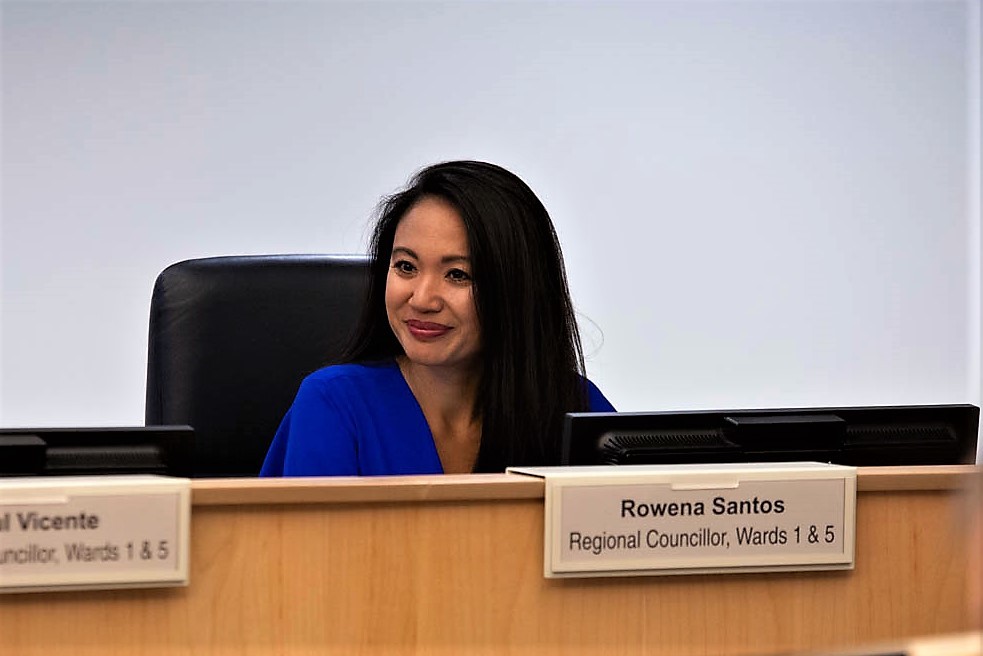
Is councillor’s move to ban election signs a waste of time? Probably, if it’s up to Queen’s Park
Brampton Councillor Rowena Santos’s effort to ban the use of election lawn signs is probably a waste of time, suggests a municipal governance expert, since the city lacks legislative power to override provincial election laws.
Santos led a successful motion last month asking city staff to conduct a study on the costs and benefits of completely barring the use of signs during elections in Brampton. Staff will report back after monitoring sign use in the October federal election.
The first-term councillor, who used election signs during her municipal campaign last year, argues that they represent another polluting use of single-use plastics and have no effect on election turnout. She declined to speak with The Pointer, but in an interview with the CBC’s Matt Galloway she asserted that “the election sign laws are governed by bylaws at the municipal level.” While it is true that the province’s Municipal Elections Act allows municipalities to make bylaws regarding election signs and advertisements, they appear to be restricted to the “message, content and nature of signs, advertising and advertising devices” as well as other issues such as timing.
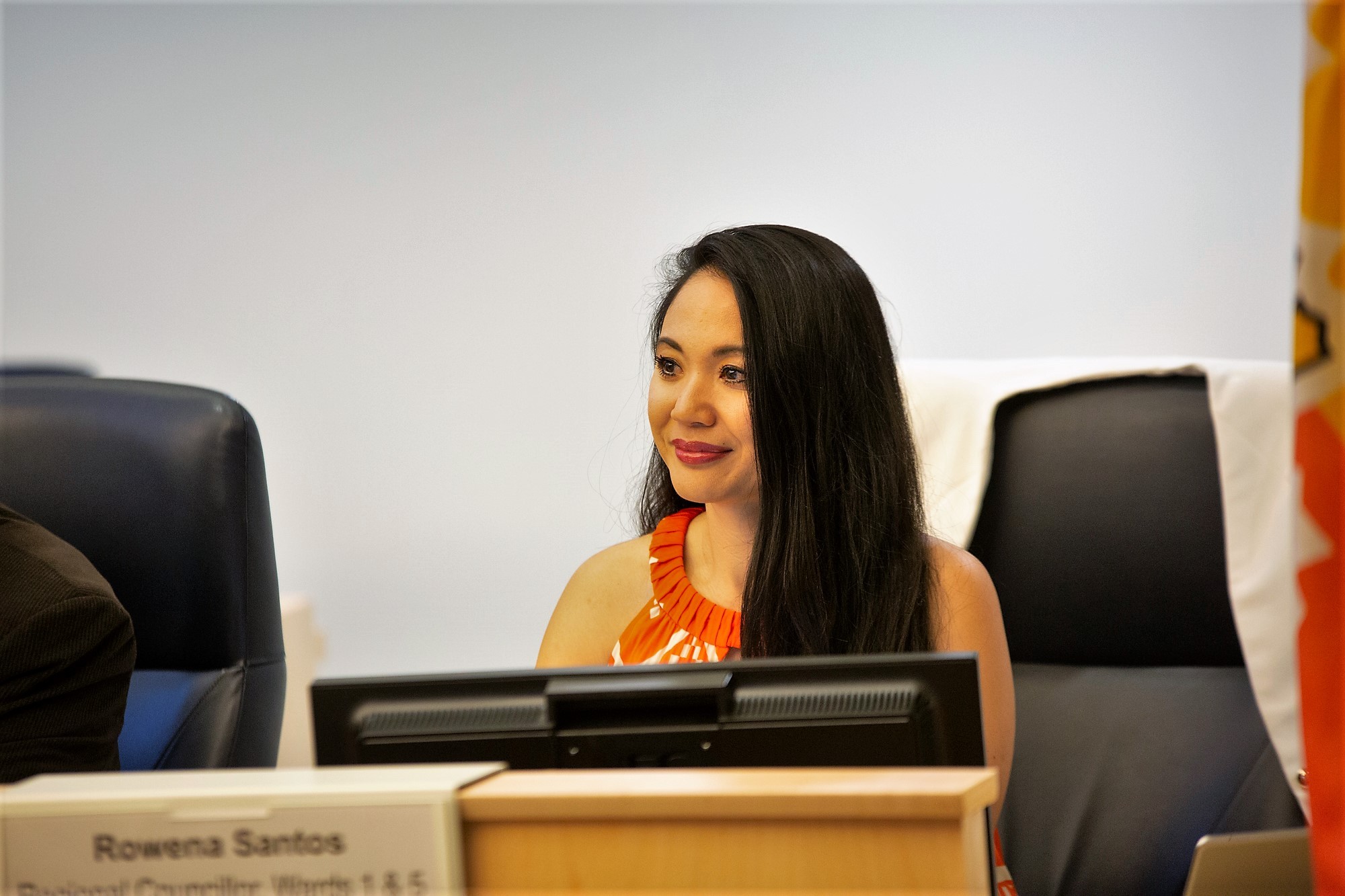
Councillor Rowena Santos
Brampton’s existing sign bylaw refers to provincial and federal legislation that govern the use of election signs. It’s unclear if Santos, who claims the city has the legal authority to bring in a comprehensive ban, has actually done her homework.
To entirely ban election signs, Brampton might need to appeal a section of the 1996 municipal elections law that explicitly outlines provisions to protect an individual’s right to display signs during an election. Other provincial and federal laws that govern election sign use for those levels of government would also have to be challenged. And provincial politicians are unlikely to agree, says York University professor Robert MacDermid, an expert on municipal elections.
The law specifies that: “No landlord or person acting on a landlord’s behalf may prohibit a tenant from displaying signs in relation to an election on the premises to which the lease relates. No condominium corporation or any of its agents may prohibit the owner or tenant of a condominium unit from displaying signs in relation to an election on the premises of his or her unit.”
Santos, whose motion passed, foresees signs being banned before the next municipal election. Gary Collins, spokesperson for Mayor Patrick Brown, said Brown “is encouraging residents to provide feedback to council members on this issue, whether it is a good idea or a bad idea.”
But Collins was vague on how residents will express concerns and how their responses will be monitored. “I assume they will either phone or email, I don’t know. Councillors will make a decision based on the calls and emails they receive; it’s like any other decision.”
MacDermid, who has conducted a number of studies of Ontario’s municipal election system, says that if the decision is left to the province, it’s "highly unlikely” such a ban would happen. To be consistent, the leaders would have to ban the use of election signs in provincial elections as well, and they would be reluctant to do so.
He said for upper-tier elections, signs become much more important. “They (provincial leaders) can’t conceive of anything beyond that,” he said. “I can’t even think of an election where [a ban] actually happens.”
Santos has been referring to an American study by Columbia University, claiming it proves election signs are not effective. However, the study actually says that in elections that are not based on party politics, there are some advantages to using signs. There is no Canadian research in the study, but other academic studies have found that election signs are valuable in creating name recognition, particularly in municipal campaigns when those challenging incumbents often have difficulty getting their names out to the voters before they have to mark a ballot.
"I think they're really important,” Tamara Small, who teaches political science at the University of Guelph, told the CBC ahead of last October’s municipal election. She researches the use of digital media in elections and advised candidates to instead use signs to overcome the challenge of name recognition.
Councillors also questioned the move by Santos, who, despite her claims of signs being ineffective, used them herself last year. Michael Palleschi brought up the advantage for incumbents and said it would be unfair to prevent challengers from using one of the best tools to create name recognition.
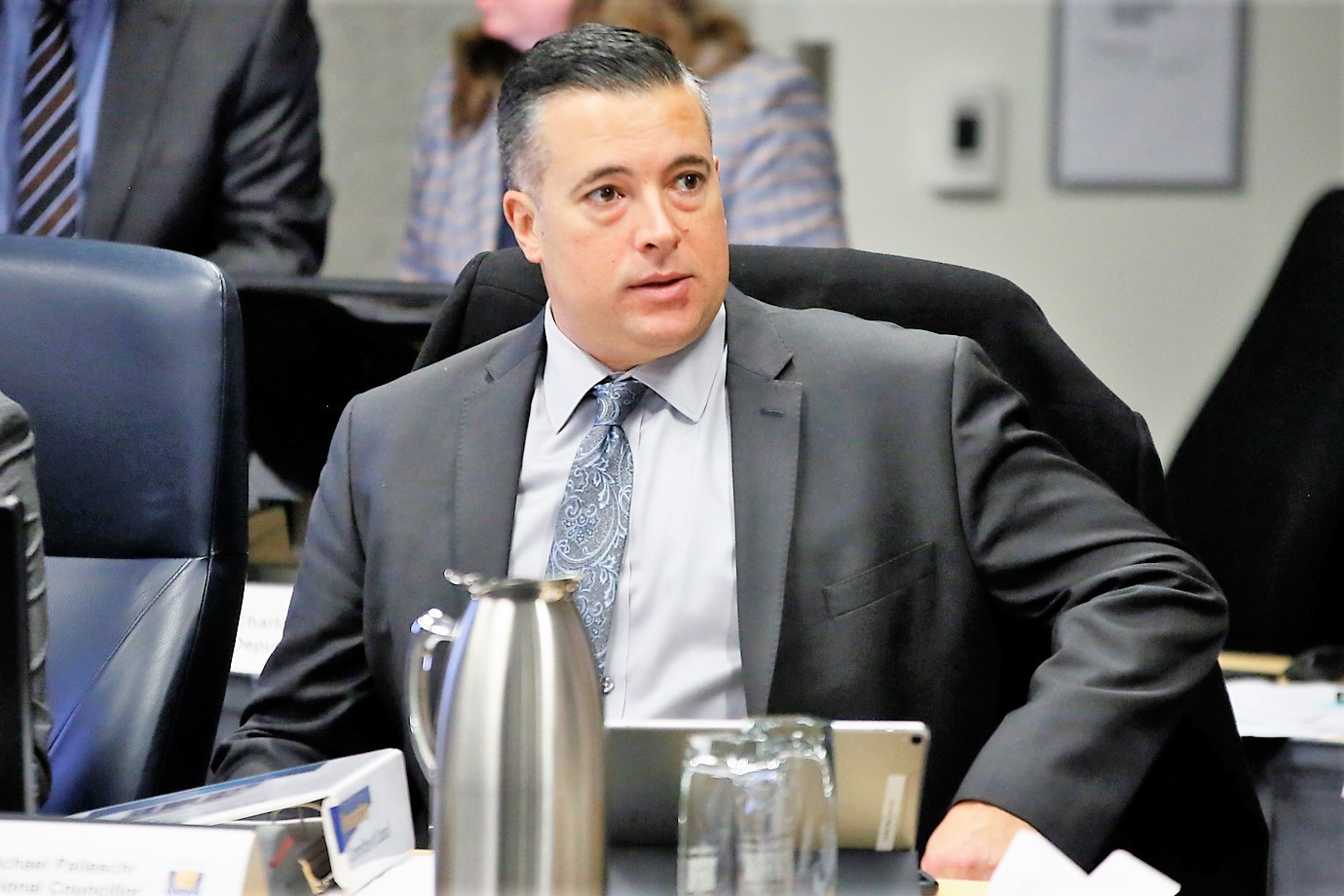
Councillor Michael Palleschi
An example of the unfair advantage is all the media attention Santos has been drumming up on the sign issue, which is an informal way of campaigning, getting her name out to the public in a way that her future challengers can’t compete with.
Councillor Charmaine Williams expressed concern that Santos is trying to take away the rights of people who want to participate in the political process.
MacDermid told The Pointer there are many alternatives to an outright ban, and said Santos’s concern about using plastic election signs can easily be addressed. “You can just use a cardboard banner (recyclable, weather resistant cardboard election signs are already used), or allow the usage of electronic billboards instead,” he said.
MacDermid, widely considered a leading expert on municipal elections, said a move to ban signs would definitely hurt political newcomers and help incumbents fortify their position of power. “In municipal elections, the advantage of incumbency and name recognition of the person holding the office has, if they choose to run again for office, could be enormous,” he said. This is especially an issue at the municipal level, he added, “because people don’t have parties to direct them, so they know the name of the person who was their councillor before, and if you want to challenge that you probably need a lot of signs to get your name out there. And that could be really important.”
Councillor Jeff Bowman told The Pointer that incumbents will always be at an advantage, with or without signs. “We’re [incumbents] in the public eye for four years, so we are at an advantage,” he said. “I used 200 signs during my election, which is significantly less than my competitors, and I still won the seat.”
In Santos’s defence, Bowman said the practice of putting up election signs may work to a newcomer’s detriment. “We councillors, as incumbents, get a lot of donations from people we know, and a new person running may not get that amount of money to buy those costly signs, putting them at a disadvantage,” he said. “If there were no signs, everyone would be on an equal playing field as far as purchasing those signs goes.”
That, however, puts the incumbent at a distinct advantage because of all the other ways they can create name recognition. Councillors such as Santos can use their taxpayer funded city budgets to promote themselves on social media, to travel to social events and attend a host of other public functions that serve as round the clock campaigning opportunities. Santos is one of the most active councillors at these public events and spends a lot of time on her social media promotion.
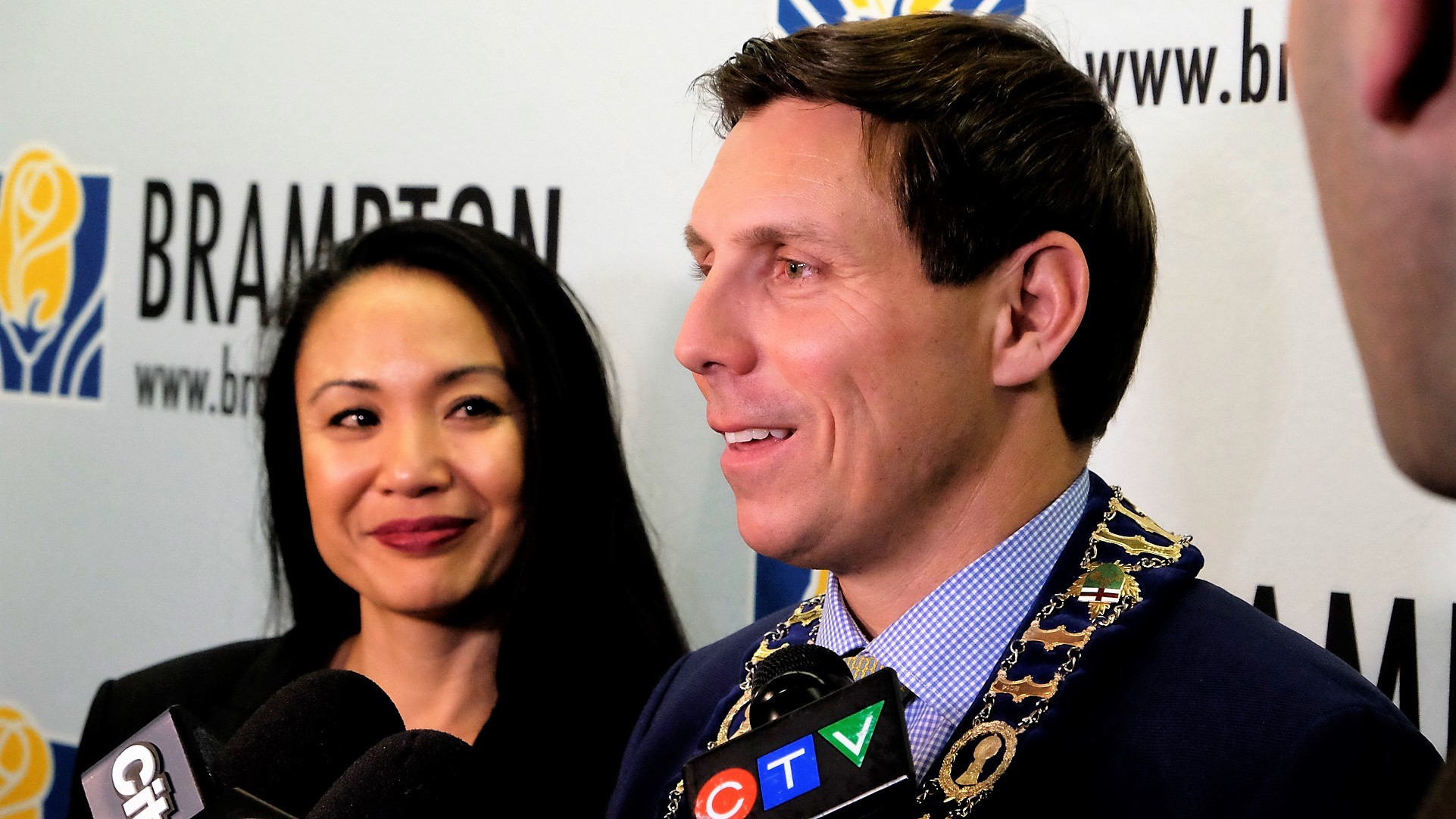
Santos in front of TV cameras with Mayor Patrick Brown
Bowman said having councillors argue for banning signs may seem contradictory after they used them to win a seat.
He doesn’t feel municipal candidates should be barred from using election signs entirely, but the proliferation of them all over the city costs the municipality thousands of dollars. The city’s bylaw officers had to pick up a lot of signs placed illegally on city property and near roadways after the last municipal election when the candidates’ campaigns failed to remove them. “For our bylaw officers to do that, they had to pick up the sign, photograph where the sign is, note its location, take everything back to the office and then write a report to have a court document for a fine to be levied against us.”
Candidates whose campaigns are found to have placed signs illegally are levied only a $40 fine, which in practice is often cut in half, while the rest of the cost of removal is borne by the city. “While we candidates pay only a portion of the amount, our city and bylaw office pay hundreds of dollars for each illegal sign, so it’s a very costly venture for the city to pick up these signs,” Bowman said.
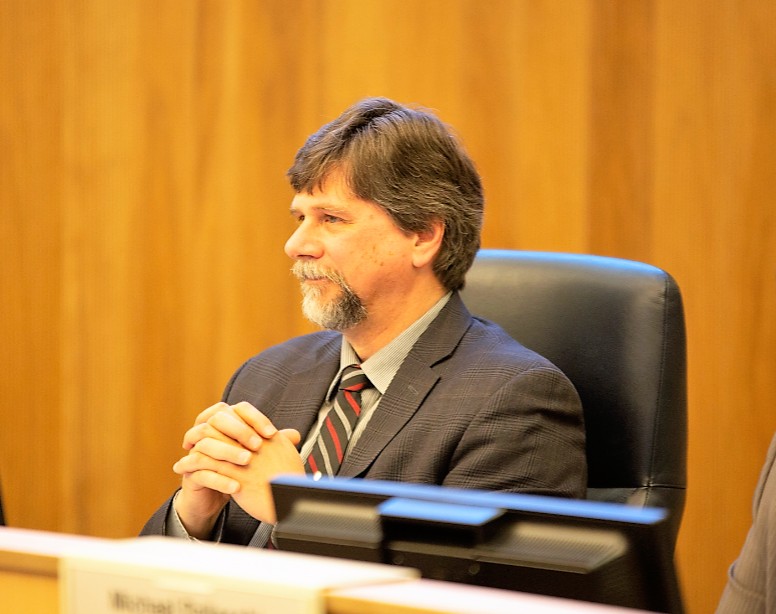
Councillor Jeff Bowman
An estimate of the cost for the last municipal election was in the $160,000 range.
Instead of a ban, Bowman suggested, the city should restrict the number of signs a candidate is allowed to place. “I would like to see a compromise where every candidate gets, let's say, a hundred signs to put around, and that’s it,” he said. “While that puts people on an equal footing, candidates would have to really determine where you’re going to put those signs to your best advantage.” He said people do need to know who’s on the ballot locally, and a sign is a tool for conveying that information.
Generally, in a municipal election, a sign will carry the name of the candidate and a platform through which they can be reached, but rarely any detail of policies or decisions they intend to make once in power. This is why, MacDermid said, although signs have conventionally been central to election campaigns, they don’t have any real utility in a municipal election. “They just tell you how wealthy a candidate they are,” he said.
Election signs, he said, have become a surrogate for good leadership and assurance that the candidate will bring positive change. That’s not particularly logical, but until now, signs have been one of the easiest ways to try to one-up an incumbent, he said.
“If the signs are removed, it will benefit the people who are deeply integrated in the society and are community leaders.”
Bowman argues there are many alternatives to a sign. “Starting to attend events, learning more about the municipal government, talking about the people, becoming involved,” he said, listing a few. “Whether it’s neighbourhood backyard barbecues, extensive door-knocking and just talking to people and meeting them, or putting a good website up, with business cards to drive people over to look at what your platform is, there’s a lot of things one can do.”
MacDermid said if the municipality wants to shun election signs, it should compensate candidates with a platform to reach out to voters.
“Municipalities could offer the candidates free airtime or the ability to put up a YouTube video or something like that, and translate that into assistance from the municipality itself, the kind of attention that would be given equally to all candidates,” he said.
Submit a correction about this story


